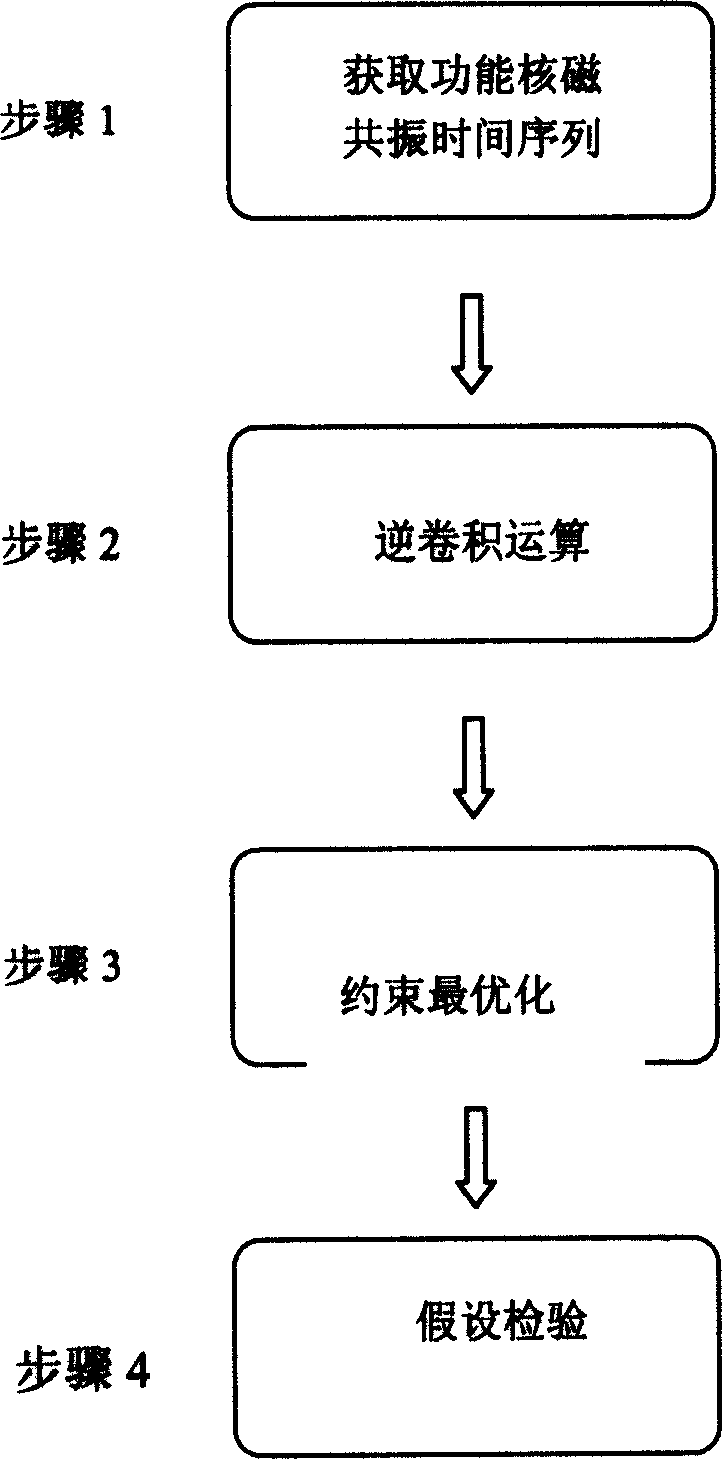Time series analysis method of nuclear magnetic resonance for brain functions based on constrained optimization
A technology of time series analysis and nuclear magnetic resonance, applied in medical science, sensors, diagnostic recording/measurement, etc., to achieve the effect of flexible expansion of the method
- Summary
- Abstract
- Description
- Claims
- Application Information
AI Technical Summary
Problems solved by technology
Method used
Image
Examples
Embodiment
[0038] 1. Estimate the hemodynamic function of a single pixel
[0039] The selected time series such as figure 2 . There are 13 stimuli and 91 time points.
[0040] We first estimate the hemodynamic function of the pixel, and the result is: [3.26 5.38 0.50 -3.92 -3.96 -4.46 -2.57]
[0041] 2. Estimate the hemodynamic function of different stimuli
[0042] Using the hemodynamic function of the pixel estimated in the first step and constrained optimization (see formula (2)), we can obtain the hemodynamic function of each stimulus (see image 3 ).
[0043] 3. Statistical hypothesis testing
[0044] Using formula (3), the calculated F statistic value is 18.53, which obeys the F(7,195) distribution, and the corresponding probability value is 2.5618e-018. In general, if the p-value is 0.01. Then this pixel is the active pixel. In addition, compared with the traditional inverse convolution method, the following table is obtained:
[0045] Method
[0046] By comparison, the F st...
PUM
 Login to View More
Login to View More Abstract
Description
Claims
Application Information
 Login to View More
Login to View More - Generate Ideas
- Intellectual Property
- Life Sciences
- Materials
- Tech Scout
- Unparalleled Data Quality
- Higher Quality Content
- 60% Fewer Hallucinations
Browse by: Latest US Patents, China's latest patents, Technical Efficacy Thesaurus, Application Domain, Technology Topic, Popular Technical Reports.
© 2025 PatSnap. All rights reserved.Legal|Privacy policy|Modern Slavery Act Transparency Statement|Sitemap|About US| Contact US: help@patsnap.com



